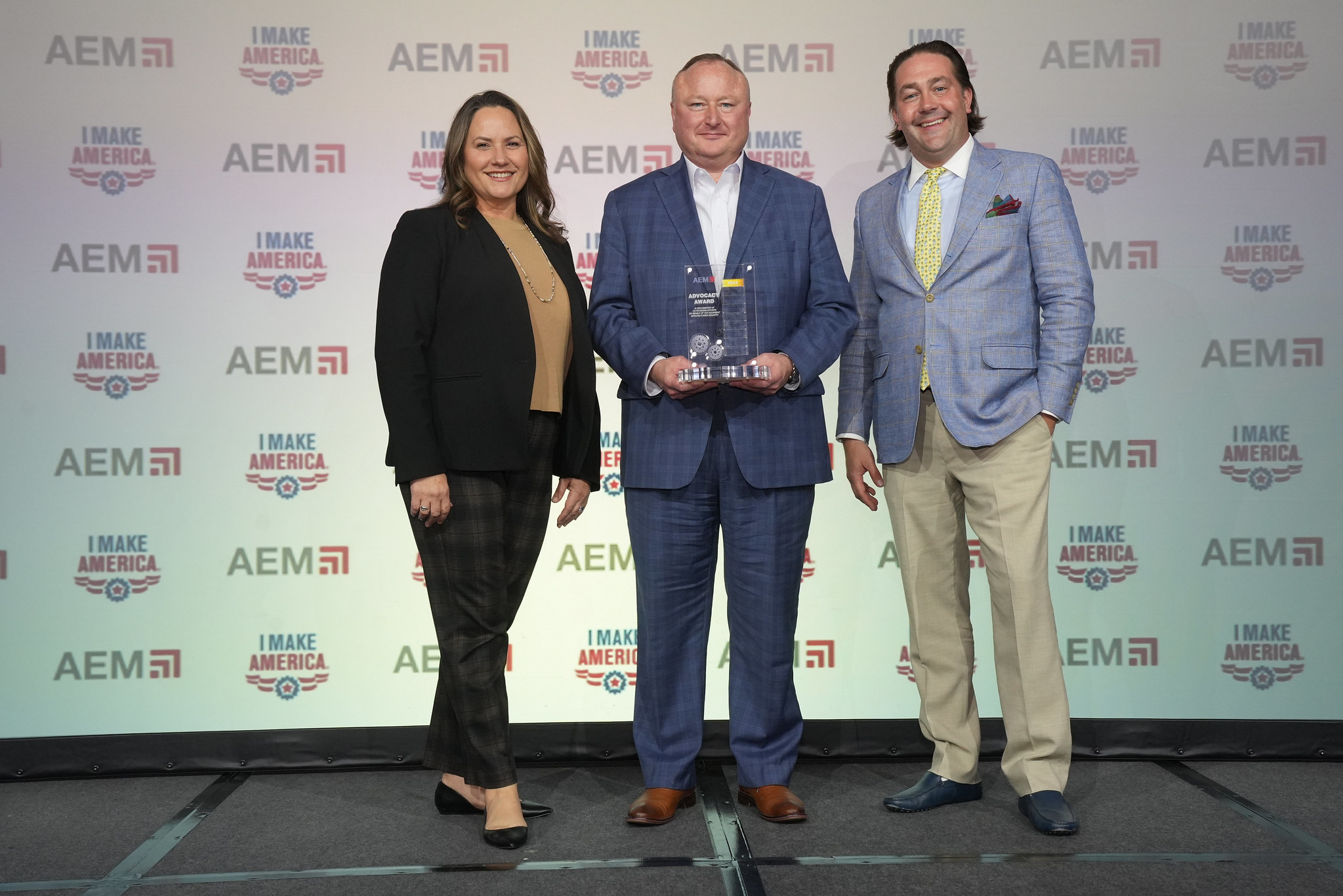By Mike Schmidt, AEM Director of Industry Communications —
It was 2009 when Cally Edgren found herself tasked with developing a comprehensive compliance program in what was a new role established for her at a large industrial automation manufacturer.
It’s an experience Edgren vividly can recall, as it was two years prior to the release of EU RoHS 2 – which restricted the use of certain hazardous substances in electrical and electronic equipment being sold into Europe. It was also eight years before the company, and many others like it, were required to comply with the regulation. Looking back, it may seem as if time was on Edgren’s side as she went about launching a compliance program and preparing for EU RoHS 2. But it was clear to her and her employer back then – as it is to many others in the manufacturing industry today – that regulatory compliance can be a significant organizational challenge, and effectively addressing regulatory demands is a task not easily accomplished.
The company quickly went about developing a well-conceived strategy and executing a number of effective tactics to ensure compliance and maintain market access in Europe once the regulation went into effect. A date was set to collect component-level data and analyze product bills of material (BOMs) to determine which products were (and perhaps more importantly, which products were not) compliant with EU RoHS 2. A deadline was then established for redesigning or obsoleting non-compliant products, and the company gave itself a two-year window to flush inventory. However, the work didn’t stop there. Edgren’s employer also was involved in developing a standard for demonstrating compliance to RoHS.
“In considering that experience, and others during my career, the takeaway is not to wait until the regulation comes out, and not to take yourself out of the game and lose market access by ignoring a regulation until it’s too late,” said Edgren, who now works as Director of Regulatory and Sustainability Experts for AEM service member company Assent Inc., a provider of supply chain sustainability management solutions.
The Lesson for Manufacturers
“If you look back at the last 50 years, we’ve moved from product safety to product environmental impact, to environmental, social and governance regulations,” said Edgren. “At one point or another, product safety and product environmental impact were optional best practices. Then, regulators got ahold of them and turned them into regulations. There’s no reason to think ESG will be any different.”
Edgren should know, as her wealth of experience working as a compliance professional taught her the importance of investing the necessary time, effort and resources into staying ahead of regulations like EU RoHS 2. Now, years later, what’s required of manufacturers to plan for, respond to and effectively address, regulatory developments continues to grow with time. And, if there’s one thing Edgren is certain of right now, the demands on the industry won’t be slowing down anytime soon.
“The subjects of regulations continue to expand, and they don’t just impact product safety,” she said. “We all know the importance and value of product safety. But now, technical regulations also focus on other product properties, such as what the products are made of in regulations like RoHS, REACH and TSCA, which impact nearly all manufacturers. They are market access regulations, and you cannot sell into a specific country if you aren’t able to prove that your product complies with the technical requirements of that country. That’s just the bottom line.”
The pace of growth in technical requirements for products continues to escalate from one year to the next, with no end in sight. In 1995, there were 415 new “technical barriers to trade” notifications made by member countries to the World Trade Organization (WTO). In 2021, there were 3,970 notifications, an increase of more than 800%.
Edgren also cited a number of proposed regulations which are emblematic of a changing landscape, one which forces many manufacturers to rethink the ways in which they’ve approached compliance efforts and supply chain sustainability up until now. One is from the Securities and Exchange Commission (SEC) on greenhouse gas reporting. Another example are all the proposed regulations tied to the EU Green Deal.
“We’re going to see an exponential increase in regulations”, she said. “They’re going to impact products and processes, and that is going to mean companies have to prove they have responsible suppliers.”
What to Do About ESG-Related Regulatory Demands
“Within a company, the person you talk to about product compliance – which is a technical, design-of-your-product function, is probably not the same person dealing with responsible sourcing topics like forced labor,” said Edgren. “So, with that in mind, I think companies need to figure out roles and responsibilities for all the different regulatory topics out there today. And if they really haven’t figured out what to do with ESG yet, they should identify someone who can focus on responsible sourcing areas in particular.”
According to Edgren, manufacturers should be paying close attention to everything happening around ESG in manufacturing and working to establish supply chain sustainability as a top organizational priority. Doing so, she said, requires developing supplier health criteria. That means:
- Fostering close supplier relationships
- Educating suppliers about compliance and sustainability requirements
- Formalizing processes for exchanging information and evaluating progress
- Setting goals for continuous improvement
It’s clear ESG practices are evolving and are becoming increasingly tied to regulatory activities and demands. Data related to a variety of ESG issues – forced labor, ethical sourcing or environmental impact, to name three – is found in manufacturing supply chains, making it increasingly more important for manufacturers to develop a greater understanding of, and appreciation for, supply chain sustainability. Ultimately, said Edgren, manufacturers of all types and sizes need to take a long, hard look at their organizational structures to determine who can take the lead on preparing for and responding to ESG regulatory demands.
And whether the efforts manufacturers undertake are driven by the need to comply with regulations, the desire to better serve customers, or the satisfaction of having contributed to a more sustainable world, what matters, said Edgren, is recognizing ESG-related regulations are happening. And, she noted, manufacturers control their own destinies in terms of how efficiently and effectively they respond.
“A lot of what wasn’t being regulated before is being regulated now, and why wouldn’t you expect that to continue? So, it’s better to get started now and check up on regulations that are already legal requirements – that’s the bare minimum – and then start working ahead and do things at your own pace,” said Edgren.
Time is of the Essence
With all that being said, Edgren offered four pieces of advice for manufacturers looking to establish and develop a program to ensure compliance with ESG-related regulations and embrace supply chain sustainability:
- Don’t try to do everything at once. Develop a roadmap and course correct as necessary.
- Pick what’s most important and focus investments of time, effort and resources.
- Learn over time, and don't be afraid to make corrections or reprioritize as the most urgent needs change.
- Share those lessons with suppliers. For most industries, the ESG impact of an organization’s supply chain often exceeds its own operational impact. According to the UN, depending on the industry, an organization’s supply chain may account for 70- 90% of its total environmental impact. So, it's important to treat suppliers as partners in this journey.
“What you shouldn’t do is wait until there’s a regulation in place, you find yourself scrambling, and your suppliers have no idea what’s going on or what you’re talking about,” said Edgren. “Staying on top of, and in front of, these regulatory developments will make ensuring compliance a much smoother experience for you and your organization. And, as we all know, it’s the right thing to do for one another and the world around us.”
For more information and news related to AEM membership, subscribe to the AEM Industry Advisor.





